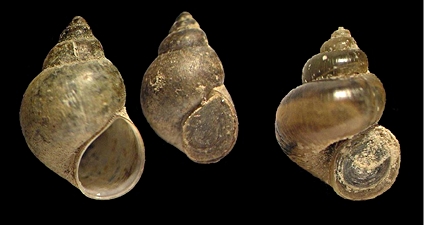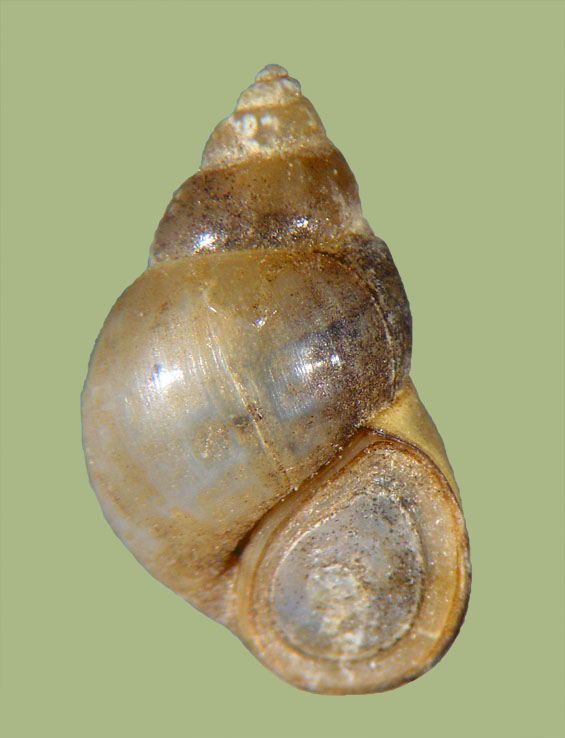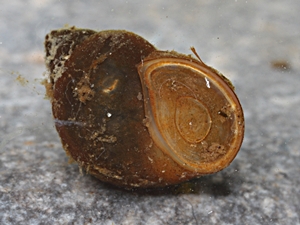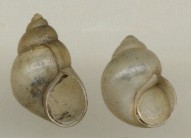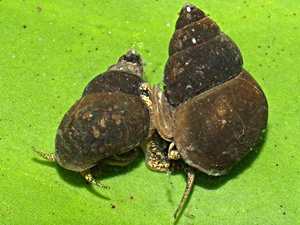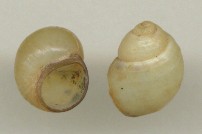Bithyniidae
Mean snout snail ( Bithynia tentaculata )
The Bithynias ( Bithyniidae ) are a living in fresh and brackish water family from the order of Architaenioglossa within the snails ( Gastropoda ).
Features
The housings are hochkonisch, smooth and rechtsgewunden. They grow to about 16 mm high. The mouth is not puffed up, and can be closed by an operculum. The head can be protruded. The antennae are long, thin and pointed, the eyes are located at the base of the sensor. Breathing is via a gill in the mantle cavity. The animals are dioecious.
Lifestyle and dissemination
The representatives of the family are found in lakes or slow-moving rivers that have clean water. The family originally came before on every continent with the exception of America. Meanwhile Bithynia tentaculata there, however, been introduced and widely used.
System
Previously, the Bithynias became the Mesogastropoden ( means worm ), an order of also viewed as obsolete subclass of prosobranch ( Prosobranchia ) found. Currently the family includes Bithynias to that of Ponder and Lindberg 1997 established order Sorbeoconcha.
In Central Europe only the type genus of the family Bithynia occurs with three species. Worldwide the following genera of the family are expected to:
- Alocinna Annandale & Prashad, 1919
- Bithynia Leach, 1818
- Congodoma Mandahl -Barth, 1968
- Digoniostoma Annandale, 1920
- Euchilus Sandberger, 1872
- Funduella Mandahl -Barth, 1968
- Gabbia Tryon, 1865
- Gabbiella Mandahl -Barth, 1968
- Hydrobioides Nevill, 1884
- Incertihydrobia Verdcourt, 1958
- Jubaia Mandahl -Barth, 1968
- Kolhymamnicola Starobogatov, 1976
- Limnitesta Mandahl -Barth, 1974
- Myosorella Annandale, 1919
- Parafossarulus Annandale, 1924
- Parodizia Medina, 1959 (? )
- Petroglyphus Möllendorff, 1894
- Pseudobithynia Glöer & Pešić, 2006
- Pseudovivipara Annandale, 1918
- Sierraia Conolly, 1929
- Tylopoma Brusina, 1882
- Wattebledia Crosse, 1886

